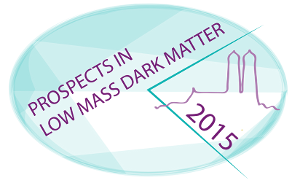Conveners
Session B
- Klaus Eitel (KIT)
Dr
Raimund Strauß
(MPI für Physik München)
30/11/2015, 16:15
The CRESST (Cryogenic Rare Event Search with Superconducting Thermometers) experiment aims at the direct detection of dark matter particles. The recent dark matter run was operated for 2 years with a total target mass of 5kg. With respect to previous measuring campaigns the intrinsic radiopurity of CaWO$_4$ crystals and the capability to reject recoil events from alpha surface contamination...
Dr
Paolo Beltrame
(University of Edinburgh - School of Physics and Astronomy)
30/11/2015, 16:45
The Large Underground Xenon (LUX) experiment is a 350kg liquid xenon time projection chamber (TPC) designed to directly detect galactic dark matter, in particular as Weakly Interactive Massive Particle (WIMP). Currently deployed 1 mile underground in the Sanford Underground Research Facility in Lead, South Dakota, LUX completed its first physics run in 2013 collecting 85.3 live-days of science...
Dr
Moritz von Sivers
(Albert Einstein Center for Fundamental Physics, University of Bern)
30/11/2015, 17:15
Dark matter experiments based on dual-phase Xe TPCs such as XENON100 and the upcoming XENON1T currently place the most stringent limits on the spin-independent WIMP-nucleon cross section for WIMP masses above 10GeV/c^2. In this talk, strategies to improve the sensitivity to lower WIMP masses such as using only the charge signal or increasing the light collection efficiency will be discussed.

